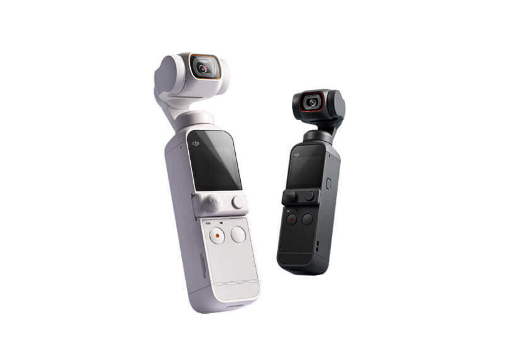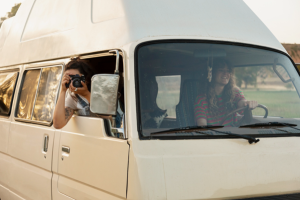Travel filming has evolved dramatically with compact, versatile cameras like the DJI Pocket, a favorite among content creators and travelers for its portability and advanced stabilization. This travel vlog camera, the DJI model, offers filmmakers powerful tools to capture stunning footage, whether exploring urban landscapes or remote nature spots.
To maximize the creative potential of this device, understanding key techniques and tricks is essential. This guide covers 10 creative ways to use the DJI Pocket for travel filming, blending practical advice with innovative ideas to elevate travel videos with ease and style. It focuses on DJI Pocket travel tips and Osmo Pocket tricks.
Achieving high-quality footage starts with mastering the DJI Pocket’s gimbal stabilization. Unlike handheld cameras jostled by natural hand movements, the built-in 3-axis gimbal keeps shots smooth and cinematic, making even fast-moving scenes look fluid. Users should hold the camera steadily and experiment with slow, deliberate movements to enhance visual narrative, panning a bustling street or tracking a hiking trail, for example.
Adjusting frame rates and resolutions is vital. Shooting at 60 fps delivers smooth slow-motion effects, while 4K resolution captures rich detail, ideal for travel footage showcasing vibrant locations. Combining steady gimbal work with thoughtful composition elevates videos from ordinary to professional.
The DJI Pocket encourages experimentation with creative shot types. A low-angle point-of-view (POV) shot can immerse viewers, making them feel part of the adventure, such as capturing footsteps on a rustic trail or the rush of ocean waves.
Time-lapse and hyper-lapse modes offer dynamic ways to chronicle travel. Time-lapse condenses hours of sunrise or city hustle into seconds, while hyper-lapse smooths motion over long distances, ideal for walking tours or road trips.
Creative transitions, such as spins or slides, achieved through controlled wrist movements, help maintain storytelling flow between scenes and add visual interest, making Osmo Pocket tricks important for engaging travel vlogs.
Travel videos are more immersive when paired with quality audio, but the DJI Pocket’s internal microphone can struggle with ambient noise. Using an external microphone adapter allows connection of better mics, capturing clearer voices and richer environmental sounds.
Travelers should also deliberately record ambient sounds: ocean waves, market chatter, or bird songs all provide context. Wind noise reduction is crucial outdoors, so directing the mic away from the wind or using foam windscreens improves audio clarity, which is essential for professional-sounding content.
Several Osmo Pocket tricks enhance the flexibility of filming while traveling. ActiveTrack is a standout feature that enables automatic subject tracking. This frees the creator to focus on framing while the camera follows moving subjects, perfect for hiking, biking, or street scenes.
Using Story Mode templates in the DJI Mimo app streamlines editing by providing built-in music, effects, and transitions, speeding up post-production on the go. The app also allows manual control over settings, empowering creators to precisely customize shots.
Travelers don’t have to stop capturing moments once the sun sets. The DJI Pocket supports manual exposure controls for low-light filming, enabling longer shutter speeds and higher ISO settings to brighten scenes without introducing excessive noise.
Accessories like neutral density (ND) filters help adjust lighting, especially during twilight. Tips for shooting fireworks or city lights include stabilizing the camera on a tripod, holding still, and experimenting with exposure to balance brightness and detail.
Efficiency is key for travel vloggers managing busy schedules. Pre-planning shots with storyboards or simple shot lists helps maintain a cohesive narrative and ensures essential elements aren’t overlooked.
The DJI Pocket’s built-in presets facilitate quick filming decisions, whether switching to slow-motion or panorama modes. Battery management, including carrying extra power banks or charging via portable solar panels, prevents missed shots during extended travel days.
Read more: How to Fly DJI Drones in No-Fly Zones the Right Way: 2025 Drone Regulations & FlySafe Guide
Enhancing the DJI Pocket’s capabilities is simpler with the right accessories. Compact tripods or selfie sticks enable versatile angles, such as overhead shots or vast landscapes, expanding creative possibilities.
Waterproof cases protect the camera when exploring beaches, waterfalls, or rainy environments. Further, portable storage solutions, such as high-speed microSD cards, enable extended recording sessions without frequent offloading.
Post-production transforms raw travel footage into polished stories. Color grading adjusts mood and tone, enhancing natural hues or creating dramatic effects that highlight the destination’s essence.
DJI’s editing software and mobile apps offer user-friendly tools for trimming, stabilizing, and enhancing clips with minimal effort. Adding text overlays or animated travel maps helps contextualize journeys, guiding viewers along the adventure.
Successful travel filming avoids typical pitfalls. Overusing transitions or effects can distract from the story and fatigue the viewer. Simplicity and purpose in edits often deliver a better viewing experience.
Neglecting battery life or ignoring storage space can abruptly halt filming, so monitoring these is crucial. Lastly, even with advanced gimbals, proper framing and stabilization remain fundamental; shaky or poorly composed shots detract from professionalism.
Publishing travel videos effectively requires platform-specific strategies. YouTube remains a popular choice, but short snippets on TikTok, Instagram, or travel forums expand reach.
Optimizing titles, descriptions, and tags with keywords like “DJI Pocket travel tips” and “travel vlog camera DJI” improves search visibility and attracts interested audiences. Eye-catching thumbnails and consistent posting schedules increase engagement across social media.
Yes, the DJI Pocket can connect to a smartphone via the DJI Mimo app using the included adapter or wirelessly with some models. This connection allows users to preview shots on a larger screen, control camera settings remotely, and access advanced editing features, enhancing overall filming flexibility.
The DJI Pocket stands out for its built-in 3-axis gimbal stabilization, which delivers smoother footage than many handheld cameras. Its compact size and ease of use also make it more travel-friendly, while some competitors may offer interchangeable lenses or higher zoom capabilities but lack integrated stabilization.
While the DJI Pocket is compact and sturdy for typical travel, it is not fully waterproof or shockproof out of the box. For extreme conditions such as underwater filming or rough terrain, protective cases and mounts are recommended to prevent damage and ensure reliability.
Yes, besides DJI Mimo, popular video editing software like Adobe Premiere Pro, Final Cut Pro, and DaVinci Resolve are excellent for refining DJI Pocket footage. These programs provide more advanced tools for color grading, effects, and transitions, allowing creators to produce professional-quality travel videos.
Read more: DJI Air 3 vs Mini 4 Pro: Which Drone Truly Offers the Best Value in 2025?
ⓒ 2025 TECHTIMES.com All rights reserved. Do not reproduce without permission.




